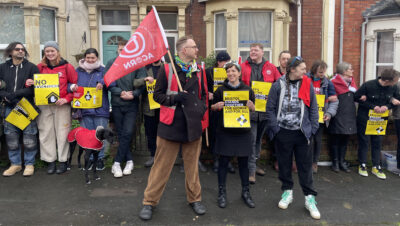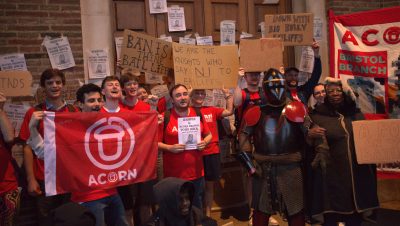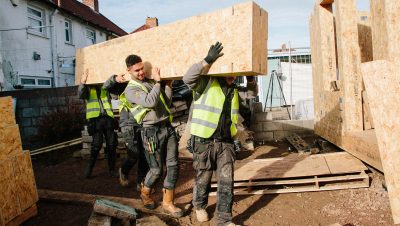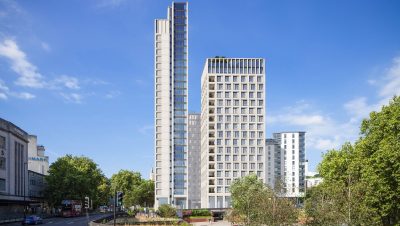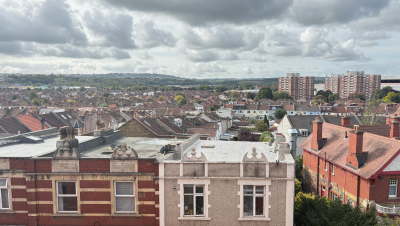
News / southmead
Southmead project among UK’s ‘biggest community-led housing schemes’
In the heart of Southmead, just off the main high street, Glencoyne Square and the adjoining Arnside Road have long felt neglected.
Littered green space, an influx of speeding Sur-Ron bikes and shuttered shops have left the area with a barren feeling.
A regeneration project is now set to change this.
is needed now More than ever
The Southmead Development Trust, alongside a residents’ group called the Arnside and Glencoyne Regeneration Project (AGRP), is leading the community‑driven regeneration project.
Planning permission has been secured to build a block of 177 flats across four storeys, of which up to 66 per cent is set to be affordable housing.
The Trust say this makes their project “one of the biggest community-led housing schemes in the UK“.
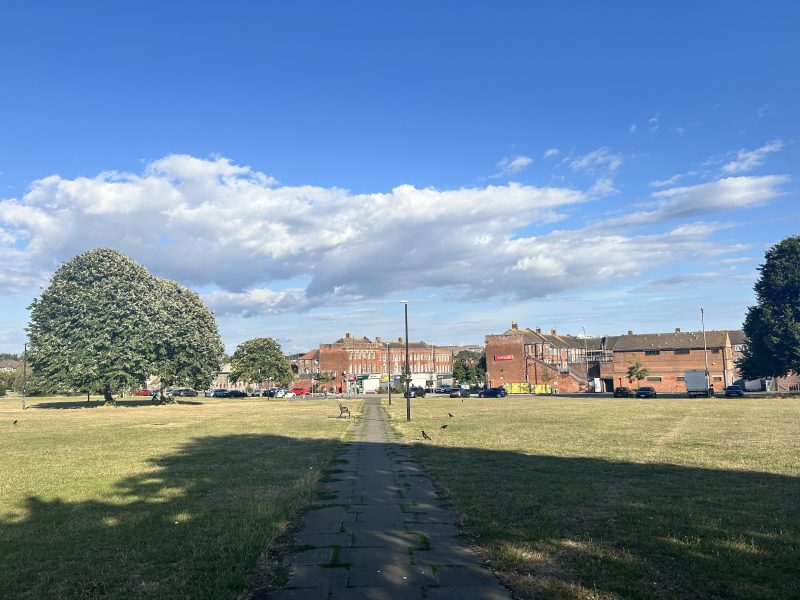
Glencoyne Square sits in the centre of Southmead – photo: Maelo Manning
Once built, the site will host community spaces such as a library, gym and local business.
Speaking to Deana Perry, a trustee at Southmead Development Trust, it is clear this change has been driven from the ground up.
“This project has been community-led from the start,” she says.
“Back in 2015, myself and some other volunteers knocked on every door in Southmead asking residents to fill out a community survey.
“We got over 900 responses, and that became our Community Plan.
“The following year, we conducted a Housing Needs Survey. That showed there were plenty of three-bed homes in Southmead but very few one or two-bed homes.
“The survey also revealed something quite stark: not one resident had anything good to say about Arnside.”
A formal steering group was formed and public workshops continued from 2018 onwards.
In 2019, a planning application was submitted and, despite delays from COVID lockdowns, design revisions and funding changes, planning consent was awarded in 2024.
View this post on Instagram
The Trust aims for construction to start in 2026.
With the Government actively encouraging an increase in community-led housing projects, announcing a £20m investment in March, the Glencoyne Square regeneration is aptly timed to demonstrate how these projects can drive grassroots community transformation.
It’s a rare example of what long-term, resident-informed development can look like in practice.
However, some long-time residents still feel uncertain about what it will mean for the neighbourhood they’ve known for decades.
Eric Grant, 77, has lived in Southmead since 1977.
For him, the changes evoke worry.
“It’s the only bit of green grass we have close to the house and the poor birds,” he said.
“It will block the view, and I don’t think it will benefit the area.”
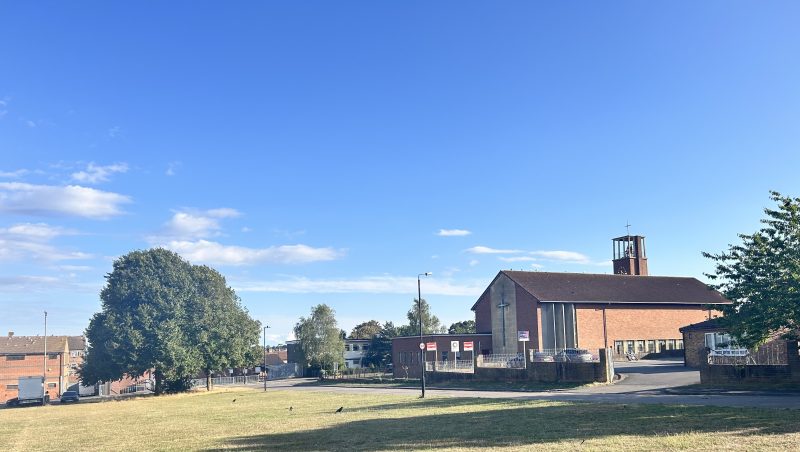
Glencoyne Square is bordered by churches and residential properties -photo: Maelo Manning
For others, the project brings cautious optimism.
Southmead resident Susan Grant, 75, shared concerns about construction noise and wildlife, but also saw the benefits.
“It might make it harder for the bikes to drive through here at all hours of the day.
“They’re a real problem around here, with noise and crime issues.
“I would be excited to have more shops and the library. There are a lot of good reasons.”
Reflecting on these criticisms, Deana sees the project as necessary despite the encroachment on some of the green space at Glencoyne Square.
“The truth is, Glencoyne isn’t used, it’s abused.
“We once took some young mums and their kids there for ice creams and a picnic.
“We had to leave because there was so much dog mess and broken glass.”

Southmead resident Ali Eltayab feels hopeful about the project – photo: Maelo Manning
Beyond the square itself, Ali Eltayeb, 25, who has lived in Southmead for 11 years, believes the development has the potential to shift how people view both Southmead and themselves.
“It sounds like this project is moving things in the right direction.
“I also think that investing in the community makes people see themselves in a different, more positive light.
“I do think that Southmead needs a project like this.”
The project also marks a potential shift for the younger generation in Southmead, with plans for several one and two-bedroom homes.
The hope is that the regeneration will spell longevity for future generations.
As Deana points out, smaller housing could also benefit multiple generations: “We have elderly residents living in three-bed council houses who want to downsize, opening up space for young families, but only if they can stay in Southmead.”
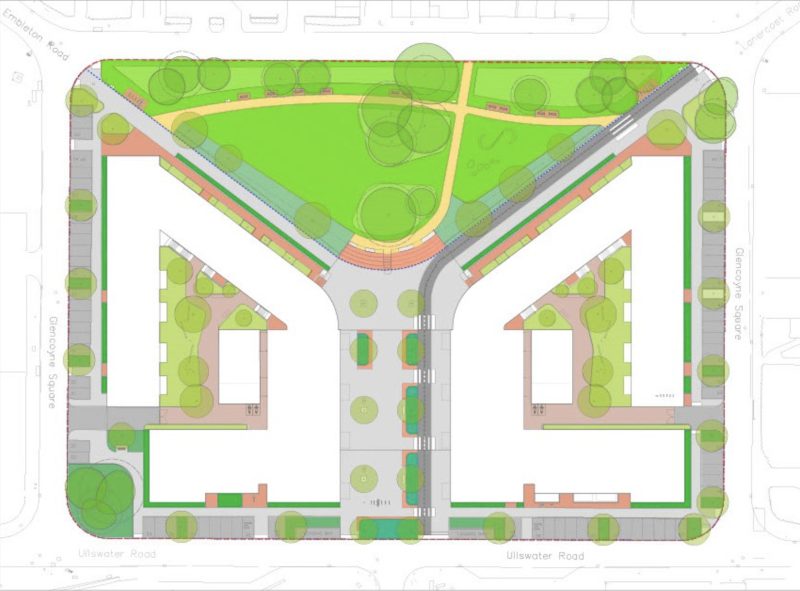
An aerial view shows the proposed plans – image: Southmead Development Trust
Mixed reactions to the regeneration project reveal the tension that often sits beneath change.
Even when plans are shaped by community voices and hard-won consultation, not everyone will feel part of the process.
For some who have lived beside Glencoyne Square for decades, change feels daunting.
But supporters of the project point to the long road it has taken to reach this point.
The vision grew not from outside investors or political pressure, but from a grassroots plan that began with listening.
Deana says the difference lies in where the ideas came from and who they are set to serve.
“These homes are specifically for people with a connection to Southmead, whether they live here, work here, or volunteer here.”
Deana hopes Glencoyne can be a catalyst for reinvigorating the area.
“The new development will bring footfall and hopefully new businesses,” she says.
“We once compared Arnside’s footfall to Gloucester Road, and it was shocking.
“They can’t be compared because of Gloucester Road’s size, but we need more foot traffic to breathe life into the area.”
Construction is expected to begin in 2026.
Until then, Glencoyne Square continues to reflect the challenges and ambition behind one of the UK’s most significant community-led housing projects.
For those watching closely, Glencoyne may not just be a Southmead story, but a test case for how community-led regeneration can be done differently.
Maelo Manning is reporting on Southmead as part of Bristol24/7’s Community Reporters programme, aiming to amplify marginalised voices and communities often overlooked by mainstream media.
This initiative is funded by our public, Better Business members and a grant from The Nisbets Trust.
Main image: Southmead Development Trust
Read Next:
 Our newsletters emailed directly to you
Our newsletters emailed directly to you












